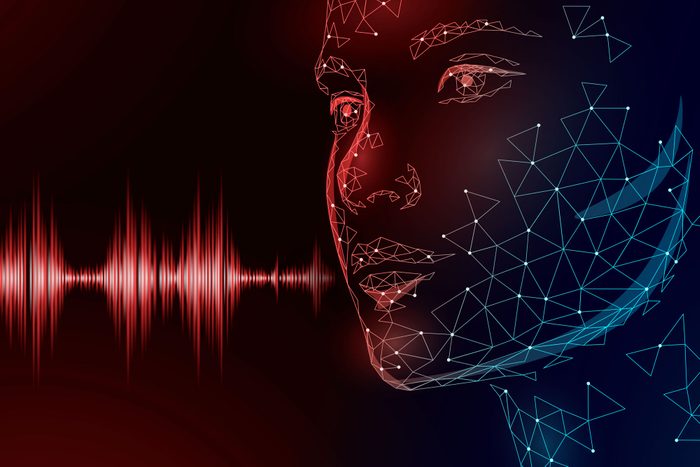
Image Source: Top AI Trends Which Small Businesses Could Adopt | Rural
As we step into 2024, the global AI market continues to evolve at a breathtaking pace, reshaping industries, redefining innovation, and reimagining the future.
This coming year promises to be a pivotal one for artificial intelligence, with breakthroughs and trends that are not just transformative but also indicative of the direction the industry is headed in the years and decades to come.
In this article, we’re going to take a deep dive into the most significant AI industry trends for 2024, explaining where growth will happen next, the risks AI adoption presents, and some driving forces that will make or break the artificial intelligence market.
AI Technology Moves Straight to Your Phone

Image Source: How Artificial Intelligence is Transforming Mobile Technology? | Google
A significant shift is on the horizon – the transition of AI technology from cloud-centric models to a more personalized, device-based experience.
This change is not just a technical evolution; it’s a significant shift bringing AI’s vast capabilities directly into the hands of consumers through their smartphones, personal computers, and a range of Internet of Things (IoT) devices.
Durga Malladi, Senior Vice President & General Manager of Qualcomm Technologies, recently spoke on how artificial intelligence solutions will begin to shift into consumers’ lives by saying:
“As generative AI becomes more integrated in our lives, our personal devices will become the hubs for multi-modal generative AI models.”
This statement underscores a future where artificial intelligence and machine learning are no longer distant, cloud-based entities but close, accessible technologies enhancing everyday experiences.
This transition is more than just a technological upgrade; it’s a catalyst for a broader adoption and upgrading of personal devices. As consumers recognize the benefits of having AI capabilities integrated into their smartphones and PCs, there will be a marked increase in the demand for devices equipped with AI-ready hardware. This, in turn, will drive innovation in device manufacturing, with a focus on building machines that can harness the power of AI effectively and efficiently.
The shift from cloud-based AI to on-device AI marks a new era for both the software and artificial intelligence hardware market. It promises to bring AI’s transformative power directly into the hands of users, creating a more personalized, efficient, and secure digital experience.
Memory Will Drive the Next Super Cycle Movement in the AI Market

Image Source: What is an AI chip, and why is it better? Why do we need GPUs in AI? | VYRIAN
The trajectory of AI development is taking a decisive turn in 2024, with the spotlight shifting from sheer computational power to the pivotal role of memory technology, particularly High Bandwidth Memory (HBM3/HBM3E), in driving the next super cycle in the AI market.
This shift reflects a fundamental change in how AI systems are designed and optimized, placing memory capacity and bandwidth at the forefront of innovation.
Major players like Nvidia and AMD are vying not just for computational performance but for supremacy in memory capacity and bandwidth per GPU. This evolution is indicative of the growing importance of AI tasks, where the ability to run neural networks entirely within memory will eliminate the need for constant data transfers with external memory.
To illustrate this trend, consider the progression from Nvidia’s H100 to the H200 GPUs. Despite not showcasing a substantial leap in computing performance – with the H200 expected to maintain a “32 PLOPS FP8” performance – the improvement of this new microchip is almost entirely focused on enhancing memory capabilities.
This choice from Nvidia to focus on memory improvement is not just a technical decision; it’s a response to the evolving demands of the AI market, particularly in the realm of Large Language Model (LLM) inferencing, where high memory capacity and bandwidth are crucial for efficient performance.
The emphasis on memory in the next generation of GPUs represents a significant shift in the AI race. It underscores the growing complexity of AI applications and the need for hardware that can keep pace with these advancements.
As AI models become more intricate and data-intensive, the ability of GPUs to process and analyze this data efficiently becomes critical. This shift towards memory-centric design in GPUs is not just a technological evolution; it’s a strategic move that will shape the future of AI development and deployment.
In short, the year 2024 marks a turning point in the AI industry, with memory technology taking center stage. This shift towards memory-focused GPU design is a response to the changing needs of AI applications, particularly in the field of inference.
As we move forward, the role of memory in AI systems will become increasingly crucial, driving innovation and shaping the next generation of AI capabilities.
Geopolitical Tensions Will Move the Entire Industry

Image Source: US-China chip war crossfire hitting smaller powers | Asia Times
Geopolitical tensions, particularly between the United States and China, are poised to significantly reshape the AI industry.
The potential for a ‘chip war’ – a strategic competition in the semiconductor sector – is emerging as a critical factor that will influence the direction and dynamics of AI development worldwide.
The United States and China have already instituted limitations on exports related to AI technology, signaling a growing awareness of the strategic importance of this technology.
The policies and relationships these superpowers forge in the coming years will have far-reaching implications for the AI industry.
For instance, export restrictions and trade policies can impact the global supply chain, affecting everything from the availability of critical components to the cost and speed of AI development. This geopolitical reality creates a complex environment for multinational companies, which must navigate shifting policies and potential disruptions to their operations.
Moreover, the tension between the United States and China could accelerate the development of regional tech hubs and lead to a bifurcation in the AI industry. Each country may invest heavily in developing its own AI ecosystem, including research, development, and manufacturing capabilities. This divergence could lead to a split in technological standards and practices, complicating global cooperation and integration in the AI field.
Conversely, this competition also has the potential to drive innovation.
The urgency to maintain or achieve technological leadership could lead to increased investment in AI research and development, pushing the boundaries of what is currently possible. This could result in faster advancements in AI technology, although potentially along divergent paths aligned with the strategic interests of each superpower.
The role of international alliances and partnerships will also be critical. How the United States and China build relationships with other countries and how they leverage these relationships in the realm of AI will greatly influence the global AI sector. This includes collaboration in research, shared standards and regulations, supply chains, and cross-border investments in AI ventures.
Scrutiny of AI Technologies Used for Fraud

Image Source: This AI Scam Mimics Loved Ones’ Voices—Here’s How to Beat It | RD
As the capabilities of artificial intelligence expand, so too does its potential for misuse, particularly in the realm of fraud.
AI technologies, with their advanced data analysis and pattern recognition capabilities, can be exploited for various fraudulent activities. These range from sophisticated financial scams, such as credit card fraud and insurance fraud, to deepfake technology used for identity theft and misinformation. The versatility and efficiency of AI in processing vast amounts of data make it an attractive tool for fraudsters, posing significant challenges to individuals, businesses, and regulatory bodies.
The response to this threat has been multifaceted. Regulatory bodies are increasingly focusing on AI technologies used for fraudulent purposes, seeking to develop frameworks that can prevent such misuse while not stifling innovation. This involves a delicate balance, as overly stringent regulations could hinder the development and beneficial applications of AI, while lax policies could leave vulnerabilities unchecked.
One of the key challenges in regulating AI in this context is the pace of technological advancement. AI technologies are evolving rapidly, currently outpacing the development of relevant laws and regulations. This creates a regulatory lag, where existing legal frameworks are insufficient to address the novel ways in which AI can be used for fraud.
Moreover, there will be a growing need for collaboration between AI developers, users, and regulatory bodies to ensure AI technologies are designed and deployed with safeguards against fraudulent use. This includes the integration of ethical considerations in AI development, such as transparency, accountability, and fairness, as well as the implementation of robust security measures.
The scrutiny of AI technologies used for fraud also highlights the importance of public awareness and education. As AI becomes more integrated into various aspects of daily life, it is crucial for individuals and organizations to be aware of the potential risks and to understand how to protect themselves from AI-enabled fraud.
The increased scrutiny of AI technologies used for fraud reflects the complex connection between technological innovation and its potential for misuse. It underscores the need for comprehensive and adaptive regulatory frameworks, collaborative efforts among stakeholders, and public awareness to address the challenges posed by AI in the context of fraud. As the world continues to harness the benefits of AI, new regulations and policies will most certainly have a large impact on how this technology develops.
AI Blends with Other Technology

Image Source: Blend of AI, Blockchain, Big Data, and IoT — A Detailed Insight | by Saurabh Shashwat | Medium
The integration of artificial intelligence with other emerging technologies is another trend that will see significant growth in 2024 and subsequent years.
Below, we’ve identified the major technologies that will begin to utilize AI solutions.
Internet of Things
One of the most significant examples of AI and other tech is the integration of AI with the Internet of Things (IoT). IoT devices, ranging from smart home appliances to industrial sensors, generate vast amounts of data. When this data is processed and analyzed by AI algorithms, it unlocks a new level of efficiency, automation, and personalization. This convergence is enabling smarter cities, more efficient manufacturing processes, computer vision capability, and personalized user experiences in homes and workplaces.
Blockchain
Another area where AI is merging seamlessly with other technologies is in the field of blockchain and cybersecurity. AI’s predictive capabilities, when combined with blockchain’s secure, decentralized ledger system, are enhancing security protocols and fraud detection mechanisms. This blend is particularly impactful in sectors like finance and healthcare, where data integrity and security are vital.
Augmented Reality
The integration of AI with virtual and augmented reality (VR/AR) technologies is also opening new frontiers. In entertainment, education, and training, AI-driven VR/AR experiences are becoming more immersive and interactive. For instance, AI can tailor VR/AR content to individual learning styles in educational applications or adapt to user interactions in real-time for more engaging gaming experiences.
Robotics
The integration of AI into the field of robotics is bringing a new age of autonomous systems characterized by increased sophistication, adaptability, and efficiency.
This fusion of AI with robotics is not just an enhancement of robotic capabilities; it’s a fundamental transformation of how robots are perceived and utilized in various sectors.
Household Robots: AI-driven robots are becoming more than just automated tools; they are evolving into intelligent assistants capable of learning from and interacting with their environment. These household robots, equipped with AI, can perform a range of tasks, from cleaning and maintenance to providing companionship and assistance to the elderly or individuals with disabilities. Their ability to learn household layouts, recognize objects, and adapt to changing conditions will make them invaluable assets in modern homes.
Industrial Robotics: In industrial settings, AI-powered robots will revolutionize manufacturing and logistics. With AI, these robots can handle complex tasks with precision and efficiency, from assembling intricate components to navigating vast warehouses. They are increasingly capable of working alongside human workers, learning from their actions, and optimizing workflows. This collaboration enhances productivity and safety, reducing the risk of human error and workplace accidents.
Healthcare Robotics: From surgical robots that assist doctors in performing delicate procedures with precision to service robots that deliver medication and assist in patient care, AI is enhancing the quality and accessibility of healthcare services. These robots can adapt to different surgical scenarios, learn from each procedure, and provide support in resource-limited settings.
This trend of AI blending with other technologies is not without its challenges. Integrating AI with other tech systems requires careful consideration of compatibility, data privacy, and ethical implications. The need for robust and secure data-sharing mechanisms is crucial, as is the need for transparency in how AI algorithms make decisions, especially when these decisions impact human lives.
As AI continues to merge with other technologies, we are likely to see even more groundbreaking applications and innovations. This blend is not only enhancing the capabilities of individual technologies but is also creating new opportunities for solving complex problems and improving quality of life.
The fusion of AI with other technologies represents a significant leap forward in our technological capabilities. It is a trend that promises to drive innovation across various sectors, reshaping our world in ways that are more interconnected, efficient, and responsive to human needs.
Advancements in Voice and Natural Language Processing (NLP)

Image Source: AI & NLP: Advancements in Speech Recognition and Language Translation | Marktine
AI is witnessing remarkable advancements in voice and Natural Language Processing (NLP), reshaping how humans interact with technology. This evolution is not just about refining the ability of machines to understand and respond to human language; it’s about creating a more intuitive, natural, and efficient communication bridge between humans and computers.
Voice technology and NLP have come a long way from simple voice commands and text translations. Today, AI-driven voice assistants are becoming increasingly adept at understanding context, emotion, and even regional dialects. This progress is a result of breakthroughs in machine learning algorithms and deep learning techniques that enable systems to learn from vast amounts of voice data, improving their accuracy and responsiveness over time.
One of the most significant impacts of these advancements is seen in consumer electronics, particularly in smart home devices. Voice assistants like Amazon’s Alexa, Google Assistant, and Apple’s Siri have become household staples, allowing users to control their home environments, access information, and manage tasks through simple voice commands. The convenience and accessibility offered by these voice-activated systems are changing the dynamics of daily routines, making technology more inclusive and user-friendly.
In the business world, advanced NLP is revolutionizing customer service and engagement. Chatbots and virtual assistants, powered by sophisticated NLP algorithms, are able to handle customer inquiries and provide support with a level of understanding and interaction that closely resembles human agents. This not only enhances customer experience but also streamlines business operations by automating routine tasks.
Another area where these advancements are making a profound impact is accessibility. Voice and NLP technologies are breaking down barriers for individuals with disabilities, offering alternative ways to interact with technology and access information. For example, voice-to-text and text-to-speech functionalities are vital tools for people with visual or motor impairments, enabling them to use technology more effectively.
Looking ahead, the future of voice and NLP technologies is poised for even greater advancements. We can expect these systems to become more context-aware, emotionally intelligent, and capable of handling complex, multi-turn conversations with ease. The integration of these technologies into more sectors, such as healthcare for patient care, and education for personalized learning and AI statistics, is also on the horizon.
Final Word

The advancements and innovations in the global artificial intelligence market are not merely additions to our digital world; they are transformative forces reshaping industries, creativity, and how we interact with technology on a fundamental level.
From the integration of AI into our smartphones to the critical role of memory in powering the next generation of AI applications, each trend we have discussed paints a picture of a future deeply intertwined with AI.
As we embrace these trends, it’s important to acknowledge the challenges ahead. The ethical implications, the need for equitable and inclusive development, and the balance between innovation and privacy are issues that will require continuous attention and thoughtful solutions.
The AI revolution is not a distant future; it is happening here and now.
It presents opportunities for growth, learning, and exploration that are limited only by our imagination.
As we move forward, the key will be to harness AI’s potential responsibly and creatively, ensuring that the trends discussed above benefit society as a whole.
Disclosure/Disclaimer:
We are not brokers, investment, or financial advisers; you should not rely on the information herein as investment advice. If you are seeking personalized investment advice, please contact a qualified and registered broker, investment adviser, or financial adviser. You should not make any investment decisions based on our communications. Our stock profiles are intended to highlight certain companies for YOUR further investigation; they are NOT recommendations. The securities issued by the companies we profile should be considered high risk and, if you do invest, you may lose your entire investment. Please do your own research before investing, including reading the companies’ public filings, press releases, and risk disclosures. The company provided information in this profile, extracted from public filings, company websites, and other publicly available sources. We believe the sources and information are accurate and reliable but we cannot guarantee it. The commentary and opinions in this article are our own, so please do your own research.
Copyright © 2023 Edge Investments, All rights reserved.
